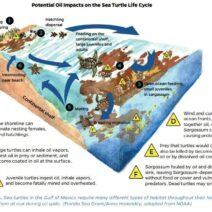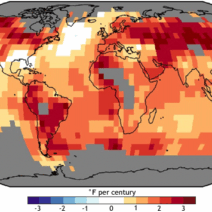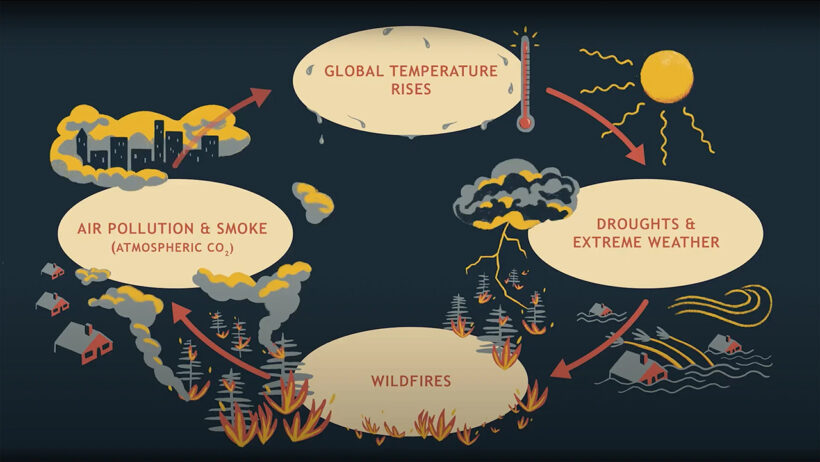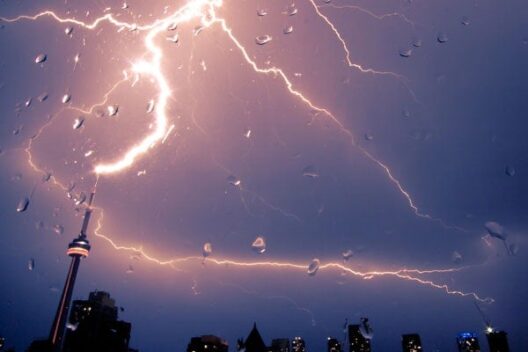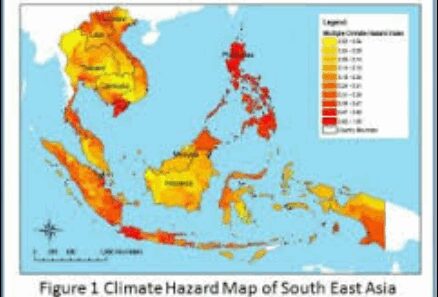As the earth continues to warm, the incidence and intensity of wildfires have become increasingly alarming. Climate change does not merely influence weather patterns; it actively exacerbates the conditions conducive to fire hazards. To comprehend the intricate relationship between climate change and wildfires, we must delve into the fire-climate feedback loop, a complex interplay that warrants immediate attention and understanding.
At the heart of the fire-climate feedback loop lies a daunting reality: as global temperatures rise, the risk and frequency of wildfires escalate in tandem. First, elevated temperatures lead to increased evaporation rates, which, in turn, desiccate vegetation. This drying of plant life renders landscapes more susceptible to ignition. The observable transformation of ecosystems due to climate change—manifesting as longer fire seasons and enhanced forest dryness—illustrates how climate acts as a catalyst for wildfire events.
Moreover, shifting climatic conditions are also altering precipitation patterns. Regions once abundant with rainfall are experiencing more erratic weather. Prolonged periods of drought create tinderbox conditions, ideal for wildfires to ignite and spread. Conversely, increased rainfall can lead to a surge in vegetation growth. While this initially seems beneficial, it ultimately results in an abundance of dry, dead fuel that can catch fire with alarming rapidity. Hence, the interplay between drought and vegetation growth exacerbates the wildfire phenomenon, further complicating the nexus between climate change and wildfires.
As we examine specific examples, consider the western United States, where forest fires have reached unprecedented levels in frequency and intensity. The higher temperatures and altered precipitation patterns have wreaked havoc on forestry assets, ravaging both ecological systems and human communities alike. From the catastrophic wildfires of California to those devastating parts of Australia, the stark correlation between climate anomalies and wildfire occurrences cannot be ignored. These episodes are not isolated incidents but part of a troubling trend that speaks to the larger implications of a warming planet.
Beyond mere occurrences, the dynamics of wildfire behavior are also evolving due to climatic shifts. Wildfires today propagate more quickly and vigorously compared to previous decades, primarily due to the increased availability of dry fuel. This phenomenon is particularly pronounced in areas that have experienced prolonged heat waves, where plant materials become parched and highly flammable. The implications of such behavior are profound, as they challenge existing fire management practices and necessitate a re-evaluation of safety protocols and strategies aimed at mitigating fire risks.
The feedback loop is not only observable in physical terms but also extends to the atmospheric behavior of wildfires. The combustion of vegetation releases significant amounts of carbon dioxide and other greenhouse gases into the atmosphere. This release contributes to global warming, creating a vicious cycle wherein climate change exacerbates wildfires, and in turn, wildfires escalate climate change. This cyclical destruction raises critical questions about how society can approach the dual challenges of climate change and wildfire management simultaneously.
To combat this interlocking crisis, it is imperative to leverage scientific expertise and innovative strategies to alter our trajectory effectively. Forest management practices must evolve to incorporate principles of adaptive management—where land use planners acknowledge changing climatic realities and adjust practices accordingly. Techniques such as controlled burns, which may seem counterintuitive, are essential for reducing fuel loads and preventing larger, uncontrollable fires. Such strategies not only mitigate immediate wildfire risks but also enhance biodiversity and promote healthy ecosystem functions.
Additionally, urban planning and community preparedness are paramount. Educational initiatives aimed at fostering awareness about fire risks in vulnerable regions can drastically improve resilience. Establishing buffer zones and implementing stricter land-use regulations can also play crucial roles in safeguarding communities against the advancing threat of wildfires. It is essential to include diverse stakeholders—ranging from local communities to policymakers—in these discussions to create comprehensive and effective mitigation strategies.
Policy frameworks also require re-evaluation in the context of climate change and wildfire management. Governments must prioritize sustainable practices that address the root causes of climate change while simultaneously enhancing firefighting capabilities and resources. Investment in research and technological innovations, such as satellite monitoring for early detection of wildfires, can facilitate a preemptive rather than reactive approach. Importantly, transitioning towards a more sustainable energy infrastructure will not only reduce greenhouse gas emissions but also tackle the broader climate crisis that fuels these fiery calamities.
The urgency of addressing the fire-climate feedback loop cannot be overstated. It is not merely an environmental concern; it intersects with issues of public health, economic stability, and social justice. As wildfires devastate infrastructure and livelihoods, the socio-economic ramifications place immense strain on affected communities, often leaving the most vulnerable populations disproportionately impacted. This underscores the moral imperative to confront climate change head-on, recognizing its role in the growing wildfire crisis.
In conclusion, the relationship between climate change and wildfires operates through a perilous feedback loop that necessitates immediate action. A multi-faceted approach, incorporating scientific research, innovative land management practices, community education, and robust policy reform, is essential to mitigate the escalating threats of wildfires exacerbated by climate change. The time for dialogue and analysis has passed; proactive measures are crucial to forge a path toward a more sustainable future that addresses the symbiotic relationship between our changing climate and the wildfires it incites.

